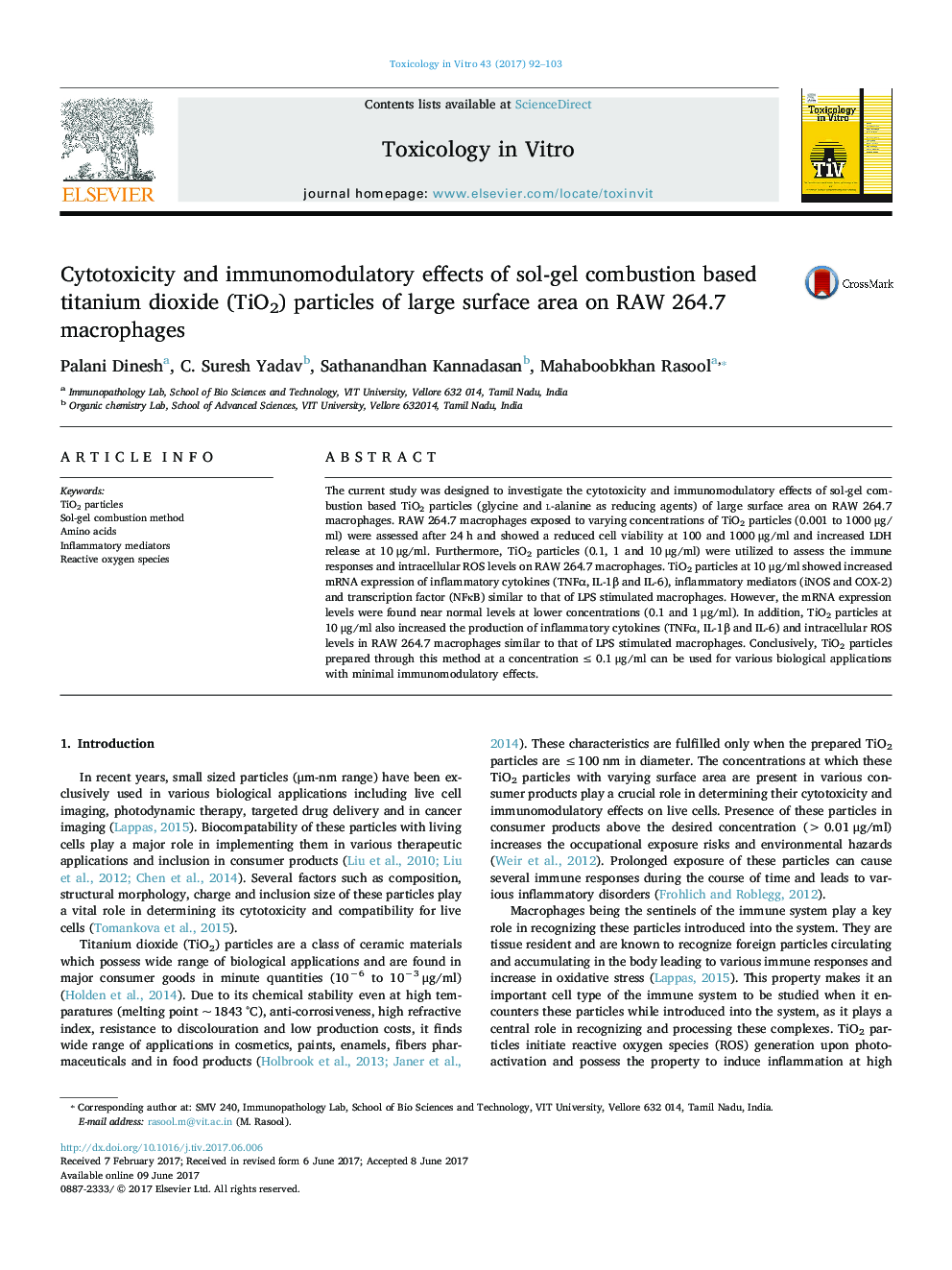| Article ID | Journal | Published Year | Pages | File Type |
|---|---|---|---|---|
| 5562581 | Toxicology in Vitro | 2017 | 12 Pages |
â¢Sol-gel combustion based TiO2 particles (glycine and l-alanine as reducing agents).â¢In vitro cytotoxicity analysis of TiO2 particles of large surface area.â¢Immune responses of low concentrations of TiO2 particles.â¢ROS levels of cells exposed to TiO2 particles.
The current study was designed to investigate the cytotoxicity and immunomodulatory effects of sol-gel combustion based TiO2 particles (glycine and l-alanine as reducing agents) of large surface area on RAW 264.7 macrophages. RAW 264.7 macrophages exposed to varying concentrations of TiO2 particles (0.001 to 1000 μg/ml) were assessed after 24 h and showed a reduced cell viability at 100 and 1000 μg/ml and increased LDH release at 10 μg/ml. Furthermore, TiO2 particles (0.1, 1 and 10 μg/ml) were utilized to assess the immune responses and intracellular ROS levels on RAW 264.7 macrophages. TiO2 particles at 10 μg/ml showed increased mRNA expression of inflammatory cytokines (TNFα, IL-1β and IL-6), inflammatory mediators (iNOS and COX-2) and transcription factor (NFκB) similar to that of LPS stimulated macrophages. However, the mRNA expression levels were found near normal levels at lower concentrations (0.1 and 1 μg/ml). In addition, TiO2 particles at 10 μg/ml also increased the production of inflammatory cytokines (TNFα, IL-1β and IL-6) and intracellular ROS levels in RAW 264.7 macrophages similar to that of LPS stimulated macrophages. Conclusively, TiO2 particles prepared through this method at a concentration â¤Â 0.1 μg/ml can be used for various biological applications with minimal immunomodulatory effects.
Graphical abstractDownload high-res image (131KB)Download full-size image
